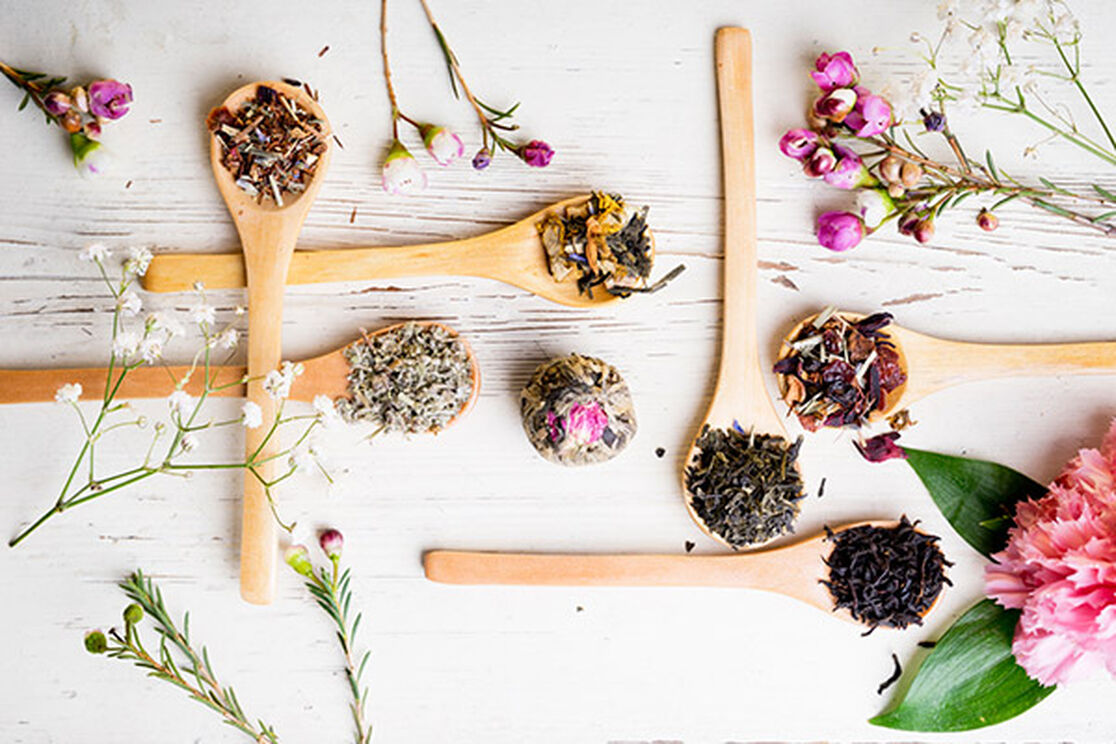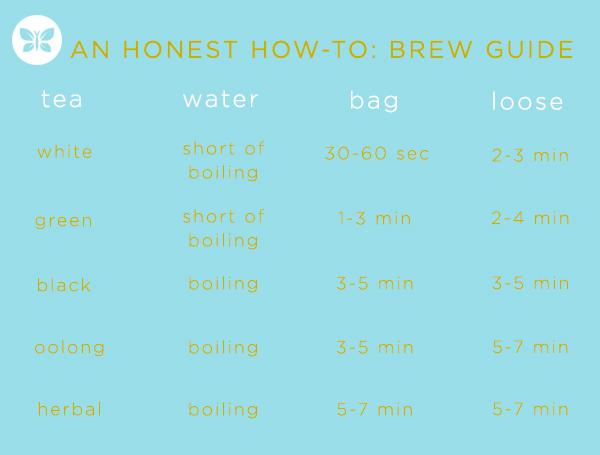“Some people will tell you there is a great deal of poetry and fine sentiment in a chest of tea.” - Ralph Waldo Emerson
Just after water, tea is the second most consumed beverage in the world. Which isn't all that surprising, considering it’s both delicious and economical — a pound of loose tea can make more than 200 cups! Tea is also popular for its vast plethora of health benefits. A publication by Harvard Medical School found that tea contains substances linked to a lower risk for heart disease, cancer, and diabetes. This means that drinking tea regularly could help improve your overall health.
We think that any time is a good time for tea, whether enjoyed as a natural boost of caffeine to get your day started, or as an herbal nightcap to soothe you off to sleep. Which type of tea is best for you? Read on to learn about our 5 favorites, then master the perfect cup using our handy brew guide. Cheers!
An Honest Guide to Tea: 5 Teas to Sip on Today
- White Tea: Made from baby tea leaves, white tea is the rarest and least processed of all tea types. Because it undergoes virtually no processing, and is made from the tender, nutrient-rich bud from the tip of the plant, white tea is considered the healthiest. It also has the highest levels of disease-fighting antioxidants, and lowest levels of caffeine. White tea has a delicate, slightly sweet flavor, making it the preferred choice for those who do not like the bitterness of black tea.
- Green Tea: Due to its abundant health benefits, green tea has been quickly growing in popularity. It is rich in EGCG — one of nature’s most powerful antioxidants — and has slightly more caffeine than white tea. As another minimally processed tea, it has a flavor profile very dependent on the season and conditions in which it is cultivated. Green teas can vary from floral and fresh to grassy and sweet.
- Black Tea: The most commonly enjoyed tea in the world, black tea is produced from leaves that are fully oxidized. This oxidation process gives black tea leaves their dark color and strong flavor, setting it apart from other teas. The antioxidants present in black tea have been shown to help lower cholesterol and possibly improve cardiovascular health.
- Oolong Tea: Falling somewhere between green and black tea, oolong tea is partially oxidized and usually brown in color. High quality oolongs are among the world’s most expensive teas because they are more intricate to process. Studies have found oolong tea to help lower blood sugar, and support weight loss by boosting metabolism.
- Herbal Tea: Any tea that does not come from the tea leaf is considered an herbal tea. This includes the teas derived from chamomile flowers, peppermint leaves, ginger root, rose hips, and more. Herbal teas are naturally caffeine free. Though they don’t have the same antioxidizing properties as true tea, they do have their own healing powers. Try peppermint tea or ginger tea to soothe an upset stomach, chamomile tea to relax and aid insomnia, lemon balm tea to calm anxiety, or hibiscus tea to lower blood pressure and strengthen the immune system. Herbal teas also host a whole spectrum of flavors, so try a few until you find the one that you like best.
Now that you are an expert on all tea types, use our easy guide below to brew your tea the right way!
Honest Tip: After tea has been made, don’t toss the leaves! Instead, compost them or use as mulch for indoor and outdoor plants. You can water plants with leftover tea, too.
What is your favorite tea to enjoy? Share your tea tips in the comments below!
We aim to provide you with the most honest and credible information possible. This article was reviewed for accuracy by The Honest Team and was written based on sources that are linked at the bottom of the article.
blog_review_statement




